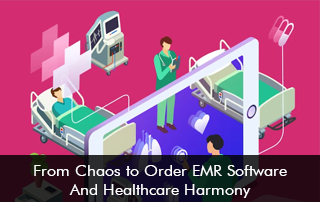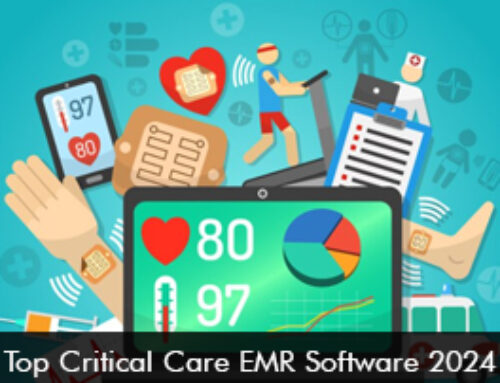Electronic Medical Records (EMR) software brings harmony to healthcare by streamlining processes, enhancing collaboration, and empowering both healthcare professionals and patients. The transition from traditional paper-based systems to EMR software has been transformative. This evolution represents a journey from chaos to order, promising enhanced efficiency, improved patient care, and a harmonious healthcare ecosystem.
Healthcare Before EMR Software
Historically, healthcare organizations grappled with mountains of paperwork. Patient records were stored in bulky files, making retrieval tedious and error-prone. Handwritten notes and prescriptions were subject to misinterpretation, and the sheer volume of paperwork slowed down processes. This chaos not only jeopardized patient safety but also strained the healthcare system’s ability to deliver timely and effective care.
EMR Software – A Technological Revolution
Enter Electronic Health Records (EHR) software, a technological revolution designed to bring order to this chaotic scenario. EMR software digitizes patient information, offering a centralized and easily accessible repository for healthcare professionals. The journey from chaos to order begins with the elimination of paper-based inefficiencies and the introduction of streamlined digital processes.
Streamlining Patient Information
One of the primary advantages of EMR software is the ability to consolidate patient information in a secure and organized digital format. Instead of sifting through mountains of paperwork, healthcare providers can now access comprehensive patient histories at the click of a button. This streamlined access to information not only saves time but also allows for a more holistic understanding of a patient’s medical background, leading to informed decision-making.
Interconnectivity for Enhanced Collaboration
EMR software facilitates seamless communication and collaboration among healthcare professionals. In a fragmented healthcare landscape, where patients may see multiple specialists, the ability to share real-time information is invaluable. EMR software creates a network where physicians, nurses, and specialists can collaborate on patient care, fostering a sense of harmony in the provision of healthcare services.
EMR Software Promotes Precision in Diagnosis and Treatment
The transition from chaos to order is further exemplified by the precision that EMR software brings to diagnosis and treatment. With accurate and up-to-date information readily available, healthcare providers can make informed decisions, reducing the likelihood of errors. Automated alerts and reminders within EHR software contribute to better adherence to treatment plans, ensuring that patients receive the right care at the right time.
Enhancing Patient Engagement
Harmony in healthcare extends beyond the professionals to the patients themselves. EMR software empowers patients by providing access to their own health records. This transparency fosters a sense of partnership between patients and healthcare providers, contributing to better-informed decision-making and improved adherence to treatment plans. Patients become active participants in their healthcare journey, contributing to a more harmonious doctor-patient relationship.
EMR Software Ensures Regulatory Compliance and Data Security
As healthcare systems transition to EMR software, they must navigate a complex landscape of regulatory requirements. However, this journey is a critical step toward establishing order in the realm of data security and compliance. EHR software is designed with stringent security measures to safeguard patient information, ensuring compliance with data protection regulations. The move from chaos to order involves not just the digitization of records but also the implementation of robust security protocols to protect sensitive patient data.
Overcoming Challenges on the Road to Harmony
While the benefits of EMR software are evident, the journey from chaos to order is not without its challenges. Healthcare organizations must navigate issues such as interoperability, data migration, and user adoption. Interoperability challenges arise when different systems cannot seamlessly exchange information, hindering the goal of a connected healthcare ecosystem. Data migration, the process of transferring existing records to the new digital system, requires meticulous planning to avoid loss or corruption of data. User adoption is another hurdle, as healthcare professionals accustomed to traditional methods may resist the transition to a digital platform.
The Future of EMR Software and Healthcare
As technology continues to advance, the future of healthcare harmony lies in the continued evolution of EMR software. Artificial intelligence (AI) and machine learning (ML) are poised to play pivotal roles in enhancing the capabilities of EHR software. Predictive analytics can help identify potential health risks, allowing for proactive interventions. AI-powered decision support systems can assist healthcare professionals in making more accurate and timely decisions.
The integration of telemedicine into EMR software represents another frontier in healthcare evolution. The ability to conduct virtual consultations, monitor patients remotely, and leverage telehealth technologies adds a new dimension to the concept of healthcare harmony. It not only improves access to care but also facilitates continuous monitoring, leading to better management of chronic conditions.







